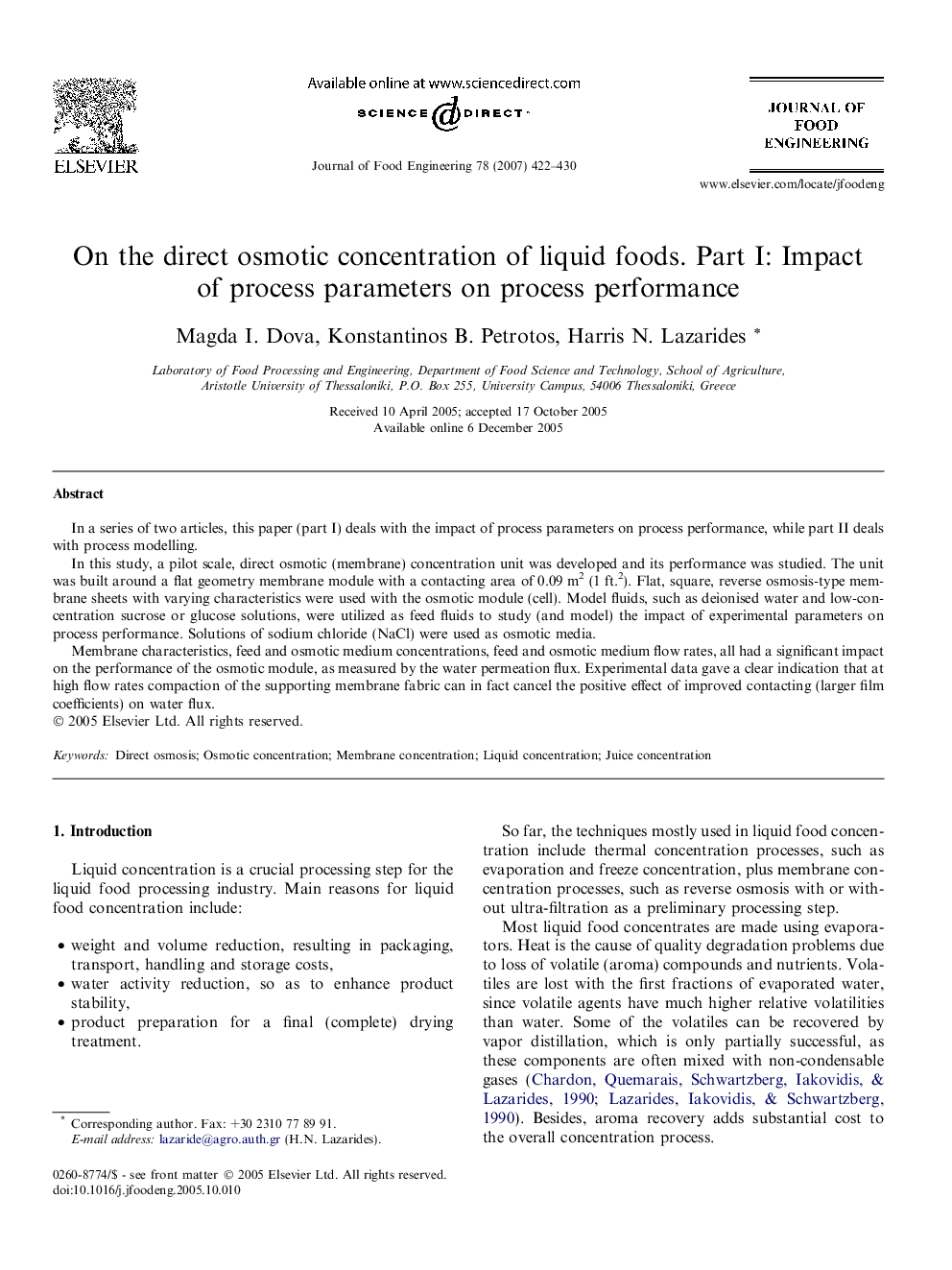| Article ID | Journal | Published Year | Pages | File Type |
|---|---|---|---|---|
| 226464 | Journal of Food Engineering | 2007 | 9 Pages |
In a series of two articles, this paper (part I) deals with the impact of process parameters on process performance, while part II deals with process modelling.In this study, a pilot scale, direct osmotic (membrane) concentration unit was developed and its performance was studied. The unit was built around a flat geometry membrane module with a contacting area of 0.09 m2 (1 ft.2). Flat, square, reverse osmosis-type membrane sheets with varying characteristics were used with the osmotic module (cell). Model fluids, such as deionised water and low-concentration sucrose or glucose solutions, were utilized as feed fluids to study (and model) the impact of experimental parameters on process performance. Solutions of sodium chloride (NaCl) were used as osmotic media.Membrane characteristics, feed and osmotic medium concentrations, feed and osmotic medium flow rates, all had a significant impact on the performance of the osmotic module, as measured by the water permeation flux. Experimental data gave a clear indication that at high flow rates compaction of the supporting membrane fabric can in fact cancel the positive effect of improved contacting (larger film coefficients) on water flux.
